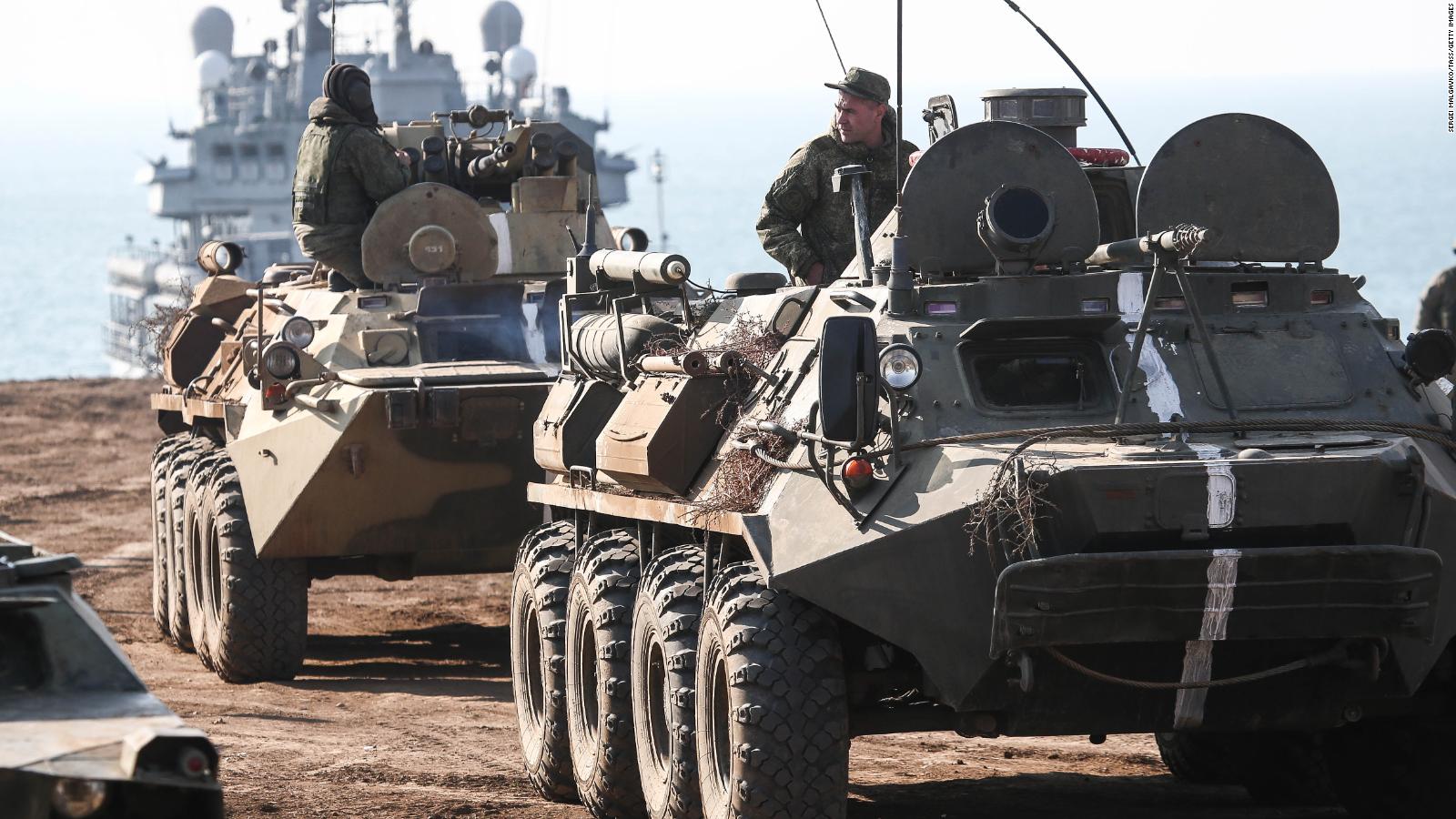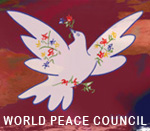USA/NATO: Continuing on course of war and oppression
| Activities - Comments |

Wolfgang Effenberger
After eight grueling hours of negotiations on January 10, 2022, between Russian Deputy Foreign Minister Sergei Alexeyevich Ryabkov and U.S. Deputy Secretary of State Wendy Sherman, Ned Price of the U.S. State Department spoke up: Washington will not consider Russian proposals for NATO expansion and has no intention of even discussing the idea.(1)
Two days later, NATO rejected Moscow's demands for extensive security guarantees. "We will not compromise on our basic principles," NATO Secretary General Jens Stoltenberg said. For example, Stoltenberg added, Russia "has no veto power on the question of whether Ukraine can become a NATO member." And U.S. Deputy Secretary of State Wendy Sherman tweeted after the negotiations, "Each country has the sovereign right to choose its own path."(2)
On January 14, Russian Foreign Minister Sergei Lavrov summarized the results of the negotiations before his traditional major press conference:
"The situation is not improving, the potential for conflict is increasing. Our Western colleagues are making a decisive contribution to such a negative development of events. They have embarked on a course to undermine the architecture of international relations based on the UN Charter and are pursuing a line of replacing international law with their own rules."(3)
In the midst of this highly explosive mix-up, Russia is alleged to have carried out a cyber-attack on Ukraine government Internet sites. Now Ukraine shall even be given access to a NATO malware platform. Meanwhile, Lavrov is demanding a written NATO and U.S. response to Moscow's demands for binding security guarantees by next week.(4)
The West's constant attempts to brand Russia as an aggressor necessitate a flashback to the end of World War II:
- As of July 1, 1945, the war plan "Operation Unthinkable," commissioned by Winston Churchill, was intended to roll back the then-Soviet Union and restore an independent Poland.(5)
- In early September 1945, U.S. President Harry S. Truman tasked General Eisenhower with "Operation TOTALITY." Using 20 to 30 atomic bombs, 20 Soviet industrial cities were to be destroyed in one fell swoop. Such plans were constantly refined.
- In 1946, as part of Operation Sunrise, some 5,000 anti-Communist Eastern European and Russian personnel were trained for operational missions at a camp in Oberammergau under the command of General Gardener Sikes and SS General Kurt Burckhardt. These and similar initiatives supported uprisings in areas such as Ukraine, which were not fully suppressed by the Soviets until 1956.(6)
- On May 15, 1947, Truman announced his doctrine to contain further expansion of the Soviet Union.
- This was followed by the Marshall Plan on June 6, 1947. Its goal was to strengthen Western Europe against the Eastern Bloc and to open markets for the American economy, which was still overheated by the war. By accepting the aid, the countries had to cede their financial sovereignty to Washington - this was the beginning of the economic colonization of Europe, which did not cost much at all (between 1948 and 1952, only about $15 billion flowed).
- On July 26, 1947, the National Security Act was passed for military penetration of the world, one of the most important laws in U.S. postwar history. Up to now, it remains the basis of worldwide American military power. The goal was to make Europe fit for war against the Soviet Union.
- On April 4, 1949, NATO was officially founded as a defensive alliance against the Soviet Union. NATO's first Secretary General and chief planner of Unthinkable, Lord Ismay, casually stated NATO's mission: to "keep the Russians out, the Americans in, and the Germans down."(7) The Alliance treaty stated that economic reconstruction and economic stability were important elements of security - hence the Marshall Plan.
On December 19, 1949, the U.S. adopted the "Dropshot" war plan to attack the Soviet Union in 1957. The "Basic Assumption" literally stated, "On or about January 1, 1957, war has been forced upon the United States by an act of aggression by the USSR and/or its satellites." As a result, 300 atomic bombs and 29,000 high explosive bombs were to be dropped on 200 targets in one hundred cities to destroy 85 percent of the Soviet Union's industrial capacity in a single strike. The timing was undoubtedly coordinated with the originally planned completion date of the remilitarization of West Germany. However, when the beeping Sputnik made its circles around the earth in 1957, war planning had to be revised, and the date for Dropshot was postponed. In Moscow, however, the plan is unforgotten.
- The National Security Decision Directive 54 (NSDD-54) of September 2, 1982, created an instrument with which the entire Soviet bloc could be subversively undermined. State after state was induced to break away from the Soviet Union with the promise of American support. In addition to destructive operations ("undermining the military capabilities of the Warsaw Pact"), economic incentives were provided, most notably the prospect of loans and cultural-scientific exchanges.(8)
- The long-term strategy papers TRADOC 525-5 of 1994 and 525-3-1 ("Win in a Complex World 2020-2040") of 2014 serve as further developments and supplements.
Russia and China were purposefully built up as threatening enemies in order to establish the U.S. as a protective military power through NATO and through various Asian defense alliances.(9) As early as 1945, U.S. philosopher James Burnham orated that the U.S. was called to "achieve world power in confrontation with the other superpowers."(10)
What will happen next? Probably further provocations and attacks blamed on Russia. In the area of possible sanctions against Russia, Washington certainly has some surprises in store. Willy Wimmer titled his January 13 article "War at the start of the Olympics on February 4, 2022?" and reminds the reader of the start of the Summer Olympics in Beijing when, just in time for the lighting of the Olympic flame on August 8, 2008, the Georgian army fired at Ossetian positions with all the firepower it had, certain to provoke an immediate reaction from the Russian army.(11)
How can such a policy that disregards international law be stopped?
The UN is apparently unable to do so. So the international community
-The League of Nations in 1919 and the UN in 1945 were born out of the thinking of war - must finally find its way to an international organisation born in the spirit of peace.(12) This organisation must be able to sanction any policy that is hostile to peace.
Notes
1)https://thesaker.is/this-is-how-the-u-s-does-dialogue/
2)https://www.welt.de/politik/ausland/article236199920/Stoltenberg-Erhebliche-Meinungsverschiedenheiten-mit-Russland.html
3) https://de.rt.com/russland/129933-sergei-lawrow-erortert-schlusselthemen-russischen/
4)https://web.de/magazine/politik/drohgebaerden-gegenseitiges-misstrauen-russland-geraet-cyber-attacke-verdacht-36514502
5) Antony Beevor: Der Zweite Weltkrieg. 1. Auflage. München 2014, S. 866 f.
6)https://irp.fas.org/world/germany/intro/gehlen.htm
7)https://internationalepolitik.de/de/nordatlantische-allianz
8)https://irp.fas.org/offdocs/nsdd/nsdd-54.pdf
9)Bereits im Herbst 1945 sah der Plan mit Namen TOTALITY (JIC 329/1) einen Atomangriff auf die Sowjetunion mit 20 bis 30 Atombomben vor. Details in Kaku/ Axelrod 1987, S. 30–31.
10) Zitiert wie www.dradio.de/dkultur/sendungen/kalenderblatt/439652/
11)https://apolut.net/krieg-zum-beginn-der-olympiade-am-4-februar-2022/
12)Wolfgang Effenberger: Reformvorschlag der G4-Staaten (Brasilien, Deutschland, Indien und Japan) in Bezug auf eine Erweiterung des Sicherheitsrats vor dem Hintergrund der geopolitischen Interessen der USA
| < Prev | Next > |
|---|
| Overstatement from Davos 2017. |
Liberal corporative capitalism, for reasons of lowering traveling costs, proposed not to travel to history alone but packed togather with NATO, EU and unipollar World Order. Workers participation has good chances to step in provisionally, buying time for full scale workers selfmanagment. |









